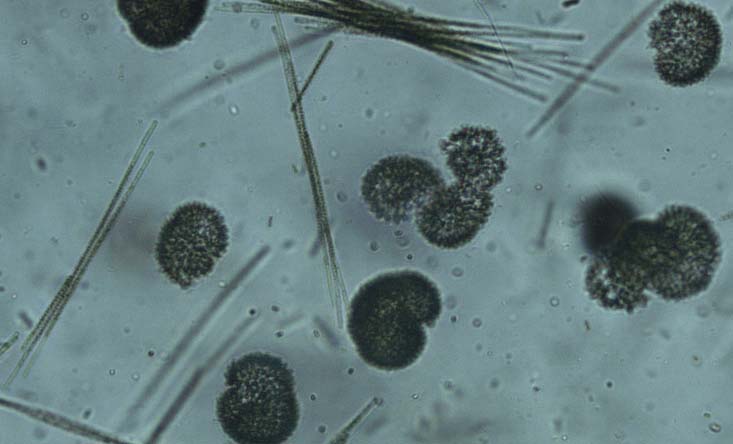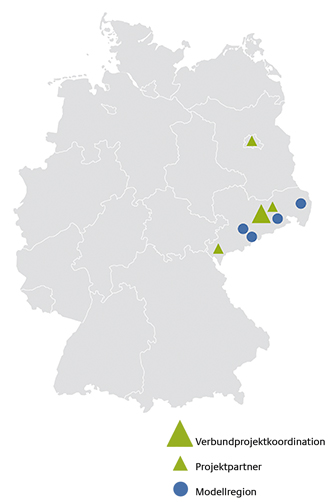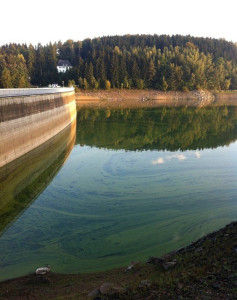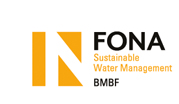CYAQUATA
Study of the interrelation between toxin-producing cyanobacteria and water quality in reservoirs and development of a sustainable management strategy



RESEARCH ON THE MASSIVE GROWTH OF CYANOBACTERIA IN RESERVOIRS
Phytoplankton concentration and taxonomic composition are important indicators of water quality in standing water bodies such as lakes, ponds, and reservoirs. A prevailing problem consists in the continual increase in planktonic cyanobacteria that can produce toxic substances (cyanotoxins). The occurrence of cyanobacteria, which erroneously also used to be called “blue-green algae”, and the release of their toxins is significantly impacting the use of reservoirs as drinking and process water supplies, and as bathing sites. Currently, more than 40 species of toxin-producing cyanobacteria and over 150 cyanotoxins with very different toxicity and effect have been identified. Research needs to be done on the reliable quantification and differentiation of cyanobacteria, the analytical determination of rarely-studied cyanotoxins, and the risk assessment of cyanobacteria mass developments (often referred to as “blooms”). This is the overall objective of the joint research project CYAQUATA.

Mass growth of cyanobacteria in the reservoir Saidenbach in Saxony, Germany
GOALS
One key goal of the joint research project is to contribute to a better understanding of the occurrence of cyanobacteria and cyanotoxins. Therefore, an extensive monitoring in different reservoirs, field experiments using enclosures, and laboratory experiments with toxin-producing cyanobacteria will be conducted. Another focus is to develop methods for the early detection of massive growth of cyanobacteria with toxin-producing potential. In order to achieve these goals, key factors for cyanobacteria growth and the production of cyanotoxins shall be identified and practicable monitoring tools will be developed. With the help of insights gained during the project, sustainable solutions for safely controlling cyanobacteria shall be made available to the responsible authorities.
MODEL REGIONS
In Germany, reservoirs supply a large percentage of drinking water. Around 40 percent of the drinking water in the federal state of Saxony comes from reservoirs. Four reservoirs in Saxony (Saidenbach, Neunzehnhain, Gottleuba, Quitzdorf) of different trophic level and use were chosen as model regions.
Key messages
- Establishment and advancement of new methods for the specific detection of cyanobacteria: FluoroProbe for in situ monitoring and flow cytometry.
- A molecular biological method (PCR) is provided to detect the genetic potential for toxin production of cyanobacteria in water samples.
- Climate change led to prolonged summer stratification in lakes and extended the growth period for cyanobacteria.
- Strategies to prevent mass developments of cyanobacteria are: Further reduction of nutrients (especially phosphorus loading), prevention of extreme water level drawdowns in reservoirs, modification of pre-dam management (aiming at control of cyanobacteria export), and increase of epilimnetic turbulence and mixing depth (partial destratification).
Further Information
Kontakt
-
Technische Universität Dresden
Institut für Wasserchemie
Dr. Hilmar Börnick
T: +49 351 463 35616
M: hilmar.boernick@tu-dresden.de -
Dr. Kristin Zoschke
T: +49 351 463 34967
M: kristin.zoschke@tu-dresden.de


 Deutsch
Deutsch




